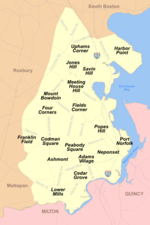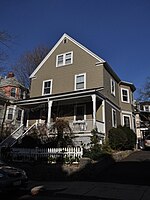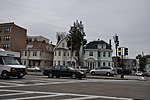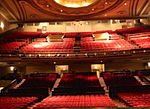First Parish Church of Dorchester

First Parish Dorchester is a Unitarian Universalist church in Dorchester, Massachusetts. The congregation was founded by English Puritans who initially saw themselves as reformers rather than separatists, but increasingly intolerable conditions in England and at the urging of Reverend John White of Dorchester, Dorset, they emigrated to New England. On March 20, 1630 as they set sail from Plymouth, England on the Mary and John, the congregation wrote its founding church covenant. Nearly all of the 140 ship passengers originated in the West Country counties of Somerset, Dorset and Devon. In late May, the ship landed first at what became called Hull, Massachusetts, and then in June at a place called "Mattapan" by the indigenous people including the Massachusett and Wampanoag. The Puritans named their new home "Dorchester Plantation." Over time, the congregation's theology changed from its Calvinist Puritan roots to Congregationalism, Unitarianism around 1816 and then in 1961 Unitarian Universalism, a faith tradition with a long history. The first church building was a crude log cabin thatched with grass. As well as the church, the Puritans founded the first elementary school supported by public money in the New World. They held the first town meeting at the church, also called a meeting house, which determined policy through open and frequent discussion. The congregation's fifth building burned in February 1896, and the current building was completed in 1897.As of spring 2015, First Parish completed the third of five phases in a $7 million restoration project, which began November 2006. The most recent phase included accessibility improvements, exterior repairs and painting, and steeple restoration. Future work will include renovation and office reorganization in the parish hall, and a significant footprint expansion to provide much-needed community, classroom, and activity space.
Excerpt from the Wikipedia article First Parish Church of Dorchester (License: CC BY-SA 3.0, Authors, Images).First Parish Church of Dorchester
Parish Street, Boston Dorchester
Geographical coordinates (GPS) Address External links Nearby Places Show on map
Geographical coordinates (GPS)
| Latitude | Longitude |
|---|---|
| N 42.308166666667 ° | E -71.062277777778 ° |
Address
First Church Dorchester
Parish Street 10
02122 Boston, Dorchester
Massachusetts, United States
Open on Google Maps









